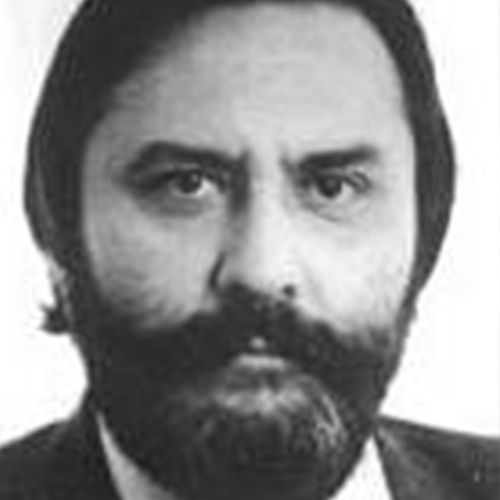 ’I was born in 1948 in Budapest in the 8th district. This is the so-called ‘gypsy district of Budapest’. My most fantastic and important memory is the existence of a community that surrounded me and to whom I always wanted and still want to belong. I was 3 or 4 years old – at that time I had platinum blonde hair – and one day I was sitting on my grandmother’s lap. My granny was a wonderful Indian goddess of one hundred and twelve kilos. I asked her if I was the same as they. Because sometimes I saw myself in puddles, here and there and noticed that I was a bit different. She answered: Well, my little son, you are just like us, exactly like us. That was the turning point of my life. I love these people and now I tell their name: the Gypsies. I became a high school student in 1962. Then I decided that I would study to be a painter one day if God helped me to do so. I wanted to help my people from a different ‘bridgehead’ in their fight against the world and a society that has never loved us, unfortunately’ – explained the artist in one of his last interviews. When I was in the Netherlands I cherished a great story. It was about how the gypsies lived and would live in Hungary. I should somehow paint this theme. I started to work on it in 1983 and then I managed to paint this 42 m2 picture at the Andrassy castle in the children’ town at Tiszadob. The story of this picture is the birth. Goddess Kali’s little son Manus – the man – comes into this world. It is rather difficult to paint this in a place where children do not have parents. I could create this myth of birth amongst people who do not have this experience in their identity. This made the picture authentic and true.’ Istvan Kerekgyarto wrote the following in his monograph on the artist: ‘His talent, his ability to found a school and the attraction of his personality, his charm made him a focal point amongst the gypsy artists – we might say he was a truly leading figure of all the Romany intellectuals. Based on renaissance and baroque tradition he created an individual visual language and figurative art that raised the problems of the Gypsies to the heights of myths and symbols. He was to first to define the Romanies’ history as a group of people in a monumental form. Thus he could keep the promise of his chosen call and created a unique gypsy art.’
’I was born in 1948 in Budapest in the 8th district. This is the so-called ‘gypsy district of Budapest’. My most fantastic and important memory is the existence of a community that surrounded me and to whom I always wanted and still want to belong. I was 3 or 4 years old – at that time I had platinum blonde hair – and one day I was sitting on my grandmother’s lap. My granny was a wonderful Indian goddess of one hundred and twelve kilos. I asked her if I was the same as they. Because sometimes I saw myself in puddles, here and there and noticed that I was a bit different. She answered: Well, my little son, you are just like us, exactly like us. That was the turning point of my life. I love these people and now I tell their name: the Gypsies. I became a high school student in 1962. Then I decided that I would study to be a painter one day if God helped me to do so. I wanted to help my people from a different ‘bridgehead’ in their fight against the world and a society that has never loved us, unfortunately’ – explained the artist in one of his last interviews. When I was in the Netherlands I cherished a great story. It was about how the gypsies lived and would live in Hungary. I should somehow paint this theme. I started to work on it in 1983 and then I managed to paint this 42 m2 picture at the Andrassy castle in the children’ town at Tiszadob. The story of this picture is the birth. Goddess Kali’s little son Manus – the man – comes into this world. It is rather difficult to paint this in a place where children do not have parents. I could create this myth of birth amongst people who do not have this experience in their identity. This made the picture authentic and true.’ Istvan Kerekgyarto wrote the following in his monograph on the artist: ‘His talent, his ability to found a school and the attraction of his personality, his charm made him a focal point amongst the gypsy artists – we might say he was a truly leading figure of all the Romany intellectuals. Based on renaissance and baroque tradition he created an individual visual language and figurative art that raised the problems of the Gypsies to the heights of myths and symbols. He was to first to define the Romanies’ history as a group of people in a monumental form. Thus he could keep the promise of his chosen call and created a unique gypsy art.’